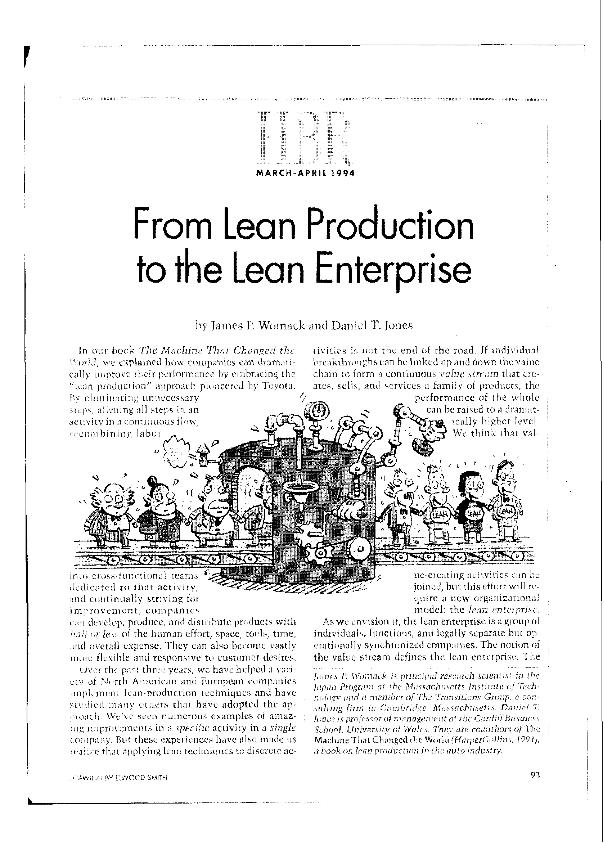From lean production to the lean enterprise

Contenido multimedia no disponible por derechos de autor o por acceso restringido. Contacte con la institución para más información.
| Tag | 1 | 2 | Value |
|---|---|---|---|
| LDR | 00000nab a2200000 i 4500 | ||
| 001 | MAP20071022058 | ||
| 003 | MAP | ||
| 005 | 20080418120631.0 | ||
| 007 | hzruuu---uuuu | ||
| 008 | 950317e19940301usa|||| | |00010|eng d | ||
| 040 | $aMAP$bspa | ||
| 084 | $a922.113 | ||
| 100 | 1 | $0MAPA20080183011$aWomack, James P. | |
| 245 | 1 | 0 | $aFrom lean production to the lean enterprise$cby James P. Womack and Daniel T. Jones |
| 520 | $aAligning all steps in an activity in a continuous flow, recombing labor into cross-functional teams dedicated to that activity, and continually striving for improvement, companies can develop, produce, and distribute products with half or less of the human effort, space, tools, time, and overall expense. The authors think that value-creating activities can be joined, but this effort will require a new organizational model: the lean enterprise. The lean enterprise is a group of individuals, functions, and legally separate but operationally synchronized companies. The notion of the value stream defines the lean enterprise | ||
| 650 | 1 | 1 | $0MAPA20080555986$aProducción |
| 650 | 1 | 1 | $0MAPA20080555061$aManagement |
| 650 | 1 | 1 | $0MAPA20080546991$aEmpresas |
| 650 | 1 | 1 | $0MAPA20080600556$aControl de producción |
| 650 | 1 | 1 | $0MAPA20080566968$aProductividad |
| 650 | 1 | 1 | $0MAPA20080563608$aOrganización |
| 650 | 1 | 1 | $0MAPA20080571566$aCasos prácticos |
| 700 | 1 | $0MAPA20080167479$aJones, Daniel T. | |
| 740 | 0 | $aHarvard business review | |
| 773 | 0 | $wMAP20077100345$tHarvard business review$dBoston$gMarch-April 1994 ; p. 93-103 |

